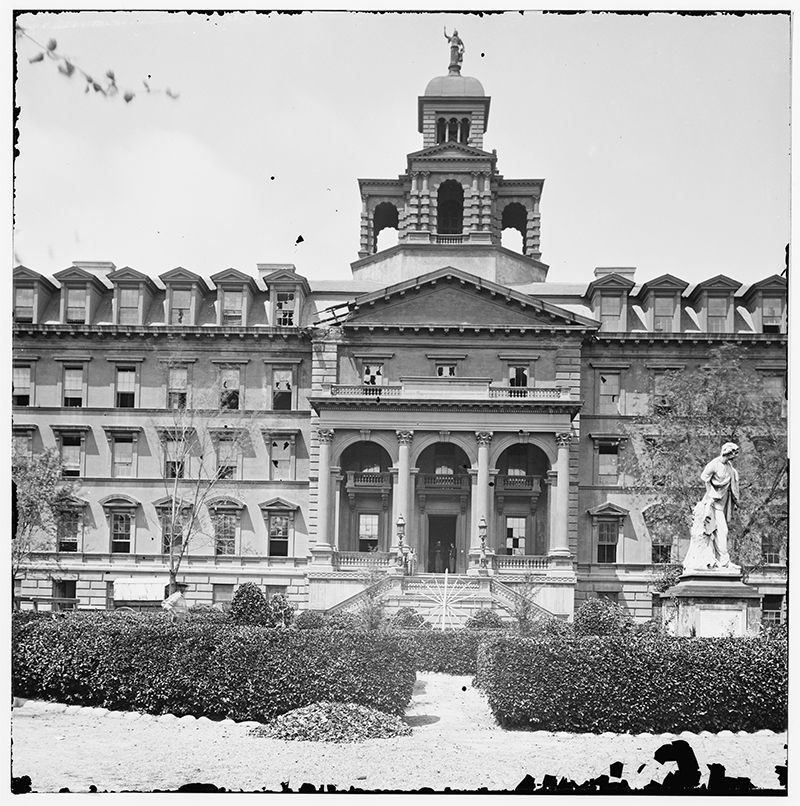Find out where you can see the statue of William Pitt today

The William Pitt statue in its second location in the yard of the Charleston Orphan House.
There once was a time when statues, after erected, stayed put. Though Charleston’s William Pitt—the first statue raised to a public man in this country—still stands, it has had a very rough and peripatetic existence.
The local South Carolina Commons House of Assembly voted in 1776 to honor this British member of Parliament who championed the colonies during the Stamp Act, declaring the tax imposed on paper products unjust. (Pitt Street is named for him as well.) The assembly paid English sculptor John Wilton 1,000 pounds to create a statue, which was unveiled in Charleston on July 5, 1770, in the intersection of Broad and Meeting streets.
In the style of the day, Pitt was depicted in a toga with a scroll (the Magna Carta) in his hand. The other arm, upraised, was broken off in the 1780 siege of the city when a British shell hit it. The one-armed figure remained in the busy intersection until 1794, when it was removed for obstructing traffic. The statue suffered another injury when it was decapitated in the move.

The William Pitt statue at a third site in Washington Square Park, in its fourth home in The Charleston Museum & its current residence inside the county courthouse.
The renovated sculpture eventually reappeared in the yard of the Charleston Orphan House, which once graced the corner of St. Philip and Calhoun streets.
In 1891, at the request of the SC Historical Society, the city relocated Pitt to a pedestal in Washington Square Park. Then, in the 1980s, to protect the marble from further deterioration, Pitt was moved again, finding a home in The Charleston Museum. Pitt made a comeback in 2002, returning close to the spot where his journey began.
He now resides inside the county courthouse, a reminder of the stand he took against tyranny and the tumbles he took over the centuries.
Photographs by (County courthouse) Jess Hill & courtesy of (Charleston Orphan House) Library of Congress & (Art work of Charleston 1893, the W.H. Parish Company, & The Charleston Museum interior) The Charleston Museum